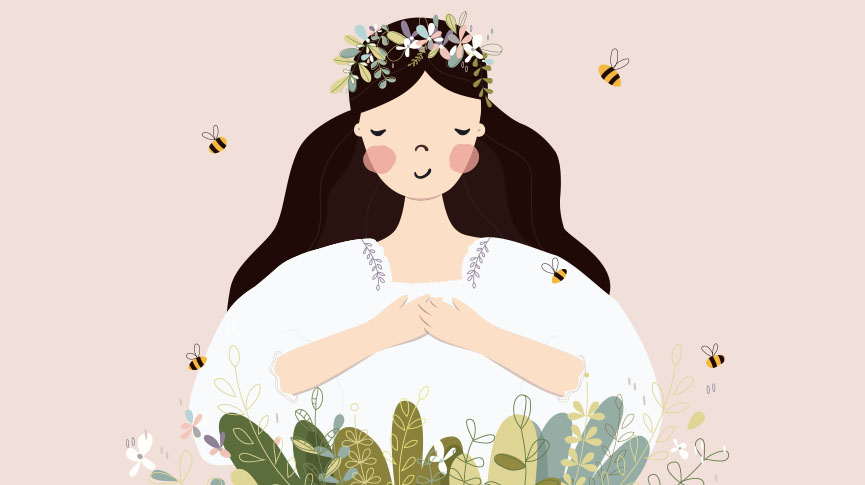Is Bee Venom Therapy The Newest Health Hack?

We’ve seen a lot of wild health hacks out there in the world of wellness, from coffee enemas to yoni eggs. Even if some of them are just trends, there are some out there that may actually have some merit, and be able to help people. One health trend that’s recently come to our awareness is bee venom therapy. Yep, you heard that right. We’re not talking about honey, propolis, or royal jelly (although those certainly have health benefits), we’re talking about bee venom.
You’ve most likely experienced a bee sting at some point in your life, so you might be wondering why on Earth someone would want to subject themselves to that intentionally. What exactly is bee venom therapy, who might it help, and is it even safe? Let’s get to the bottom of this stinger of a question.
What is Bee Venom Therapy?
Bee venom therapy, BVT, is just what it sounds like – using the poison that makes bee stings painful for therapeutic purposes. While bees use their venom for self-defense, like many of the other substances that they make, the venom may also help support the health of humans. BVT is nothing new. It’s been widely used in countries worldwide like The United Kingdom, Germany, China, Switzerland, and Korea for over 5000 years. But how is it done?
Manufacturers of bee venom solutions use a bee venom collector. Treatment can be administered in a few different ways: manual “acupuncture” injections, direct bee stings, and topically using an ointment or ultrasound gel. For manual injections, the venom is usually diluted in water or saline solution. This works similarly to acupuncture by injecting into specific meridians, or energetic lines that connect to certain organs and systems in the body for therapeutic purposes.
Injection treatment typically entails doing the procedure two to three times a week during the duration of treatment. Each treatment may involve up to twenty stings or injections. The type of BVT treatment done will depend on what the treatment is for and the patient’s needs.
What is Bee Venom Therapy Used For?
What would make someone want to inject themselves with bee venom? It may be helpful for a variety of conditions.
Bee Sting Allergies
The first and most common use of BVT might seem counterintuitive but it’s for people with bee sting allergies. BVT has been found to be safe for people with severe bee allergies. It is actually the first treatment typically used for severe allergies, and can significantly reduce reactions, which could be potentially life-saving. BVT for bee allergies provides 98% to 99% protection against bee stings. In the United States, there is an FDA-approved product for this purpose.
Nerve and Muscular Pain and Disorders
People with conditions that cause nerve and muscular-skeletal pain may be able to benefit from BVT. This includes conditions like osteoarthritis, nerve pain, and arthritis. Researchers found a significant improvement in arthritis when BVT was used both topically and injected. It may potentially be able to help people with multiple sclerosis and Parkinson’s Disease, but there is limited data on the effectiveness of bee venom therapy for these conditions.
Lyme Disease
People with chronic Lyme disease report significant improvements in their symptoms like fatigue, joint pain, and cognition through BVT.
PCOS
BVT may even be helpful in certain reproductive health disorders like PCOS. Hormone levels in people with Polycystic Ovarian Syndrome (PCOS), were more regulated after seven weeks of topical treatment.
Autoimmune Disorders
Bee venom may help to relieve immune-related illnesses, but other experts advise against using BVT if you have an autoimmune disorder as it might increase the symptoms by causing the immune system to become more active. Contradictory we know, so let’s look at the potential risks of BVT.
Is Bee Venom Therapy Safe?
The biggest question that probably comes to mind is whether or not bee venom therapy is safe. The short answer is yes.
A comprehensive review of bee venom therapy research found the most common side effects:
- Skin reactions at the injection site
- Headache
- Pain in extremity
- Inflammation of the nasal cavities
Other less common but potential side effects include:
- Anxiety
- Heart palpitations
- Vomiting and nausea
- Dizziness
- Low blood pressure
These side effects are more common in people who have prior allergies to bee stings. Some people have taken it upon themselves to self-administer BVA through their own hives at home, we advise against this. Bee venom therapy injections should always be done by a trained professional. It’s also important to know if you take any medications that may interact with BVT such as those used to suppress the immune system.
As with anything, it’s essential to consult your medical provider before starting any new treatment, especially if you have underlying conditions. Alternative methods to bee therapy that are still in the holistic health realm include acupuncture and naturopathic medicine.

Natasha (she/her) is a full-spectrum doula and health+wellness copywriter. Her work focuses on deconstructing the shame, stigma, and barriers people carry around birth, sex, health, and beyond, to help people navigate through their lives with more education and empowerment. You can connect with Natasha on IG @natasha.s.weiss.


